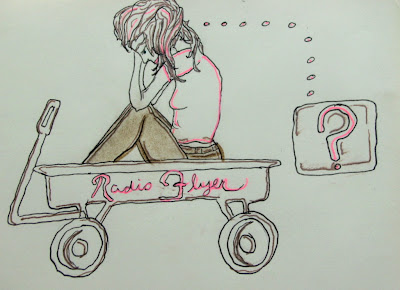First of all, a door mouse is a dormouse. That's good to know.
Wikipedia says: Dormice are small for rodents, with a body length of between 6 and 19 cm (2.4 and 7.5 in), and weighing between 15 and 200 g (0.53 and 7.1 oz). They are generally mouse-like in appearance, but with furred, rather than scaly, tails. They are largely but not exclusively arboreal animals, and are agile and well adapted to climbing. Most species are nocturnal. Dormice have an excellent sense of hearing, and signal each other with a range of different vocalisations.
and
One of the most notable characteristics of those dormice that live in temperate zones is hiberbation. Dormice can hibernate six months out of the year, or even longer if the weather remains sufficiently cool, sometimes waking for brief periods to eat food they had previously stored nearby. During the summer, they accumulate fat in their bodies, to nourish them through the hibernation period.
and...Ack!
The edible species was considered a delicacy in ancient Rome, either as a savoury appetizer or as a dessert (dipped in honey and poppy seeds). The Romans had a special kind of enclosure known as glirarium used to rear dormice for the table. Dormice to this day are eaten in Slovenia. Dormouse fat was used by the Elizabethans to induce sleep.
(a really large number of pictures of dormice i found on flickr were labeled edible. that sucks.)
This website has a lot of information on them and also diagrams and also really cute pictures.
Also, Alice In Wonderland.
Also, Jefferson Airplane.
Also, Beatrix Potter has story called
Ginger and Pickles featuring some sleepy dormice.
Also, A.A. Milne:
The Dormouse and The Doctor
There once was a Dormouse who lived in a bed
Of delphiniums (blue) and geraniums (red),
And all the day long he'd a wonderful view
Of geraniums (red) and delphiniums (blue).
A Doctor came hurrying round, and he said:
"Tut-tut, I am sorry to find you in bed.
Just say 'Ninety-nine' while I look at your chest....
Don't you find that chrysanthemums answer the best?"
The Dormouse looked round at the view and replied
(When he'd said "Ninety-nine") that he'd tried and he'd tried,
And much the most answering things that he knew
Were geraniums (red) and delphiniums (blue).
The Doctor stood frowning and shaking his head,
And he took up his shiny silk hat as he said:
"What the patient requires is a change," and he went
To see some chrysanthemum people in Kent.
The Dormouse lay there, and he gazed at the view
Of geraniums (red) and delphiniums (blue),
And he knew there was nothing he wanted instead
Of delphiniums (blue) and geraniums (red).
The Doctor came back and, to show what he meant,
He had brought some chrysanthemum cuttings from Kent.
"Now these," he remarked, "give a much better view
Than geraniums (red) and delphiniums (blue)."
They took out their spades and they dug up the bed
Of delphiniums (blue) and geraniums (red),
And they planted chrysanthemums (yellow and white).
"And now," said the Doctor, "we'll soon have you right."
The Dormouse looked out, and he said with a sigh:
"I suppose all these people know better than I.
It was silly, perhaps, but I did like the view
Of geraniums (red) and delphiniums (blue)."
The Doctor came round and examined his chest,
And ordered him Nourishment, Tonics, and Rest.
"How very effective," he said, as he shook
The thermometer, "all these chrysanthemums look!"
The Dormouse turned over to shut out the sight
Of the endless chrysanthemums (yellow and white).
"How lovely," he thought, "to be back in a bed
Of delphiniums (blue) and geraniums (red.)"
The Doctor said, "Tut! It's another attack!"
And ordered him Milk and Massage-of-the-back,
And Freedom-from-worry and Drives-in-a-car,
And murmured, "How sweet your chrysanthemums are!"
The Dormouse lay there with his paws to his eyes,
And imagined himself such a pleasant surprise:
"I'll pretend the chrysanthemums turn to a bed
Of delphiniums (blue) and geraniums (red)!"
The Doctor next morning was rubbing his hands,
And saying, "There's nobody quite understands
These cases as I do! The cure has begun!
How fresh the chrysanthemums look in the sun!"
The Dormouse lay happy, his eyes were so tight
He could see no chrysanthemums, yellow or white.
And all that he felt at the back of his head
Were delphiniums (blue) and geraniums (red).
And that is the reason (Aunt Emily said)
If a Dormouse gets in a chrysanthemum bed,
You will find (so Aunt Emily says) that he lies
Fast asleep on his front with his paws to his eyes.
So basically a dormouse is a tiny, very shy, very sleep little rodent that people sometimes eat. It seems like if you ask most people to tell you what they know about dormice they'll tell you that they are very very very sleepy. Which is cute. They don't actually fall asleep in mid sentence....but only because they can't talk.



